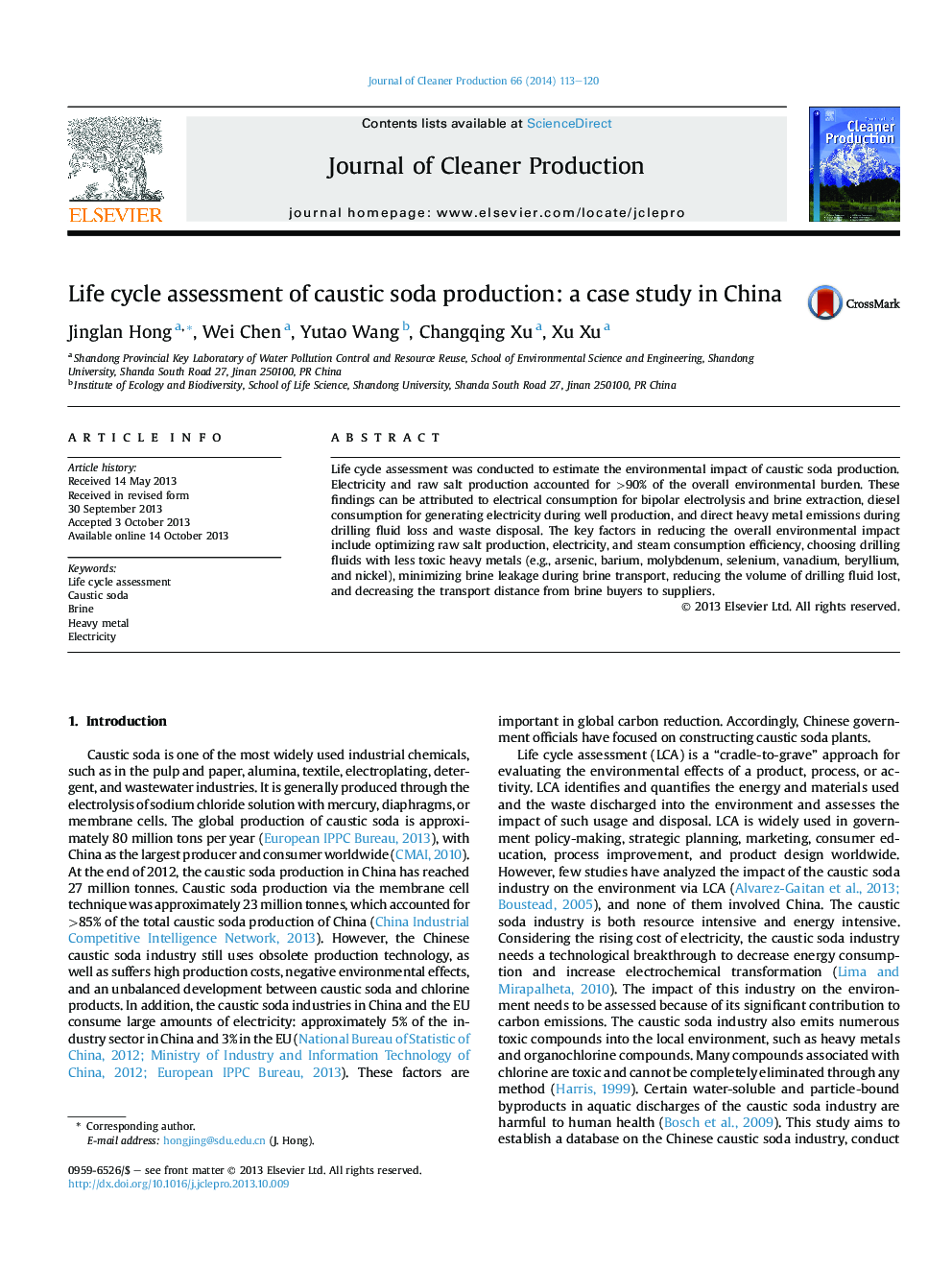| Article ID | Journal | Published Year | Pages | File Type |
|---|---|---|---|---|
| 1744980 | Journal of Cleaner Production | 2014 | 8 Pages |
Life cycle assessment was conducted to estimate the environmental impact of caustic soda production. Electricity and raw salt production accounted for >90% of the overall environmental burden. These findings can be attributed to electrical consumption for bipolar electrolysis and brine extraction, diesel consumption for generating electricity during well production, and direct heavy metal emissions during drilling fluid loss and waste disposal. The key factors in reducing the overall environmental impact include optimizing raw salt production, electricity, and steam consumption efficiency, choosing drilling fluids with less toxic heavy metals (e.g., arsenic, barium, molybdenum, selenium, vanadium, beryllium, and nickel), minimizing brine leakage during brine transport, reducing the volume of drilling fluid lost, and decreasing the transport distance from brine buyers to suppliers.
